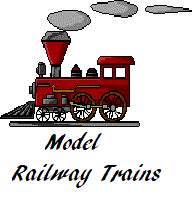Model Railway Trains
If you are a hobbyist who loves model railway trains, you might be interested in this blog post. I will share with you some tips and tricks on how to build, maintain and enjoy your miniature railway system.
Model Railway Trains Scale and Gauge
First of all, you need to decide what scale and gauge you want to use for your model railway trains. Scale is the ratio of the model size to the real size, while gauge is the distance between the rails. There are many different scales and gauges available, but some of the most popular ones are:
-
-
- HO scale (1:87) and OO gauge (16.5 mm): These are the most common scales and gauges worldwide, especially in North America and Europe. They offer a good balance between detail and space, and offer a wide range of products and accessories.
- N scale (1:160) and N gauge (9 mm) are the second most popular scales and gauges, especially in Japan and Asia. They are ideal for small spaces, allowing you to fit more scenery and track in a smaller area. However, they also require more precision and care, as the models are smaller and more delicate.
- G scale (1:22.5) and G gauge (45 mm): These are the largest scales and gauges, usually used for outdoor or garden railways. They can withstand harsh weather conditions and have a realistic and impressive appearance. However, they also require more space and money, as the models are bigger and more expensive.
-
Model Railway Trains Layout
Once you have chosen your scale and gauge, you need to plan your layout. You can use a software program, a paper sketch, or a modular system to design your track plan. You should consider factors such as:
-
-
- The theme and era of your model railway trains: You can choose to model a specific location, period or style of railway, such as steam, diesel or electric. You can also mix and match different themes and eras, as long as they are compatible and realistic.
- The size and shape of your available space: You should measure your space accurately and decide how much room you have for your model railway trains. You should also consider the shape of your space, whether it is rectangular, square, L-shaped or irregular.
- The budget and time you have for your project: You should set a realistic budget and timeframe for your model railway train project. You should also prioritise your expenses and tasks and decide what is essential and what is optional.
- Complexity: How much detail and functionality do you want to add to your model railway trains? You can make your layout more realistic and interactive by adding lights, sounds, signals, switches, bridges, tunnels, buildings, vehicles, people, animals, etc. However, these also increase the cost and difficulty of your project.
-
Steps to Assemble Your Model Train Layout
After you have planned your layout, you need to build it. You can use different materials and methods to construct your baseboard, track, scenery and structures. You should follow these steps:
-
-
- Build your baseboard: This is the foundation of your layout, where you will attach your track, scenery and structures. You can use wood, foam board or other materials to make your baseboard. You should make sure it is sturdy, level and smooth.
- Lay your track: This is where your model railway trains will run on. You can use ready-made track sections or flexible track to create your track plan. You should make sure it is aligned, secured and electrified.
- Add your scenery: This is where you will create the landscape and environment of your layout. You can use grass mats, flock, trees, rocks, water features and other items to make your scenery. You should make sure it is realistic, varied and harmonious.
- Install your structures: This is where you will add the buildings, bridges, tunnels, signals and other elements of your layout. You can use kits, scratch-built or ready-made structures to enhance your layout. You should make sure they are scaled, detailed and positioned correctly.
-
Conclusion to Model Railway Trains
Finally, you need to enjoy your model railway trains. You can run your trains manually or automatically, using analog or digital control systems. You can also add sound, lighting and special effects to make your layout more dynamic and interactive. You should have fun with your model railway trains but also take care of them by cleaning them regularly.
I hope this blog post has given you some useful information on how to build, maintain and enjoy your model railway trains. If you have any questions or comments, please feel free to contact me or leave a reply below.

